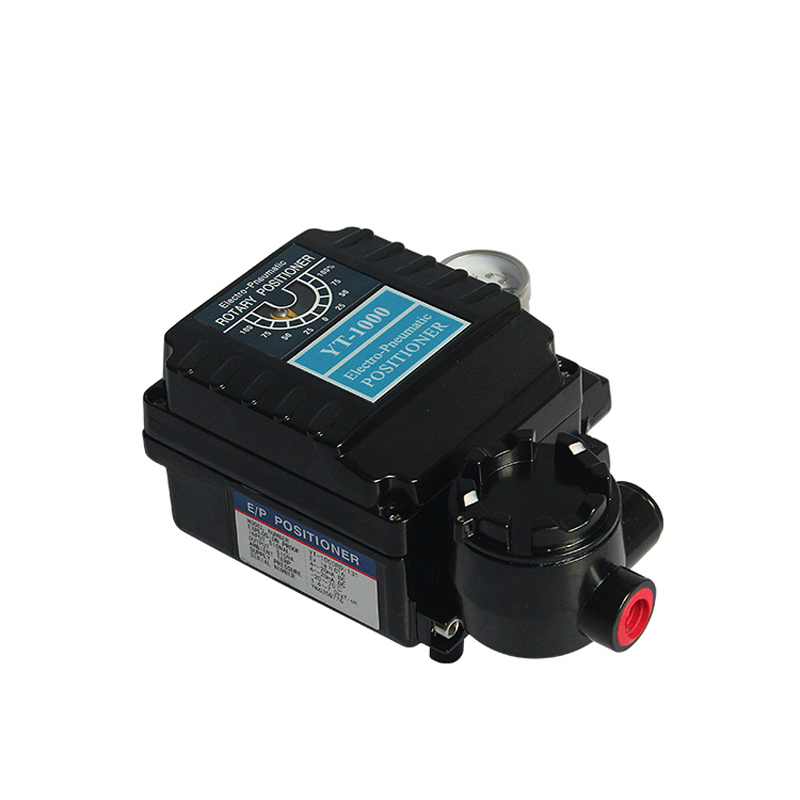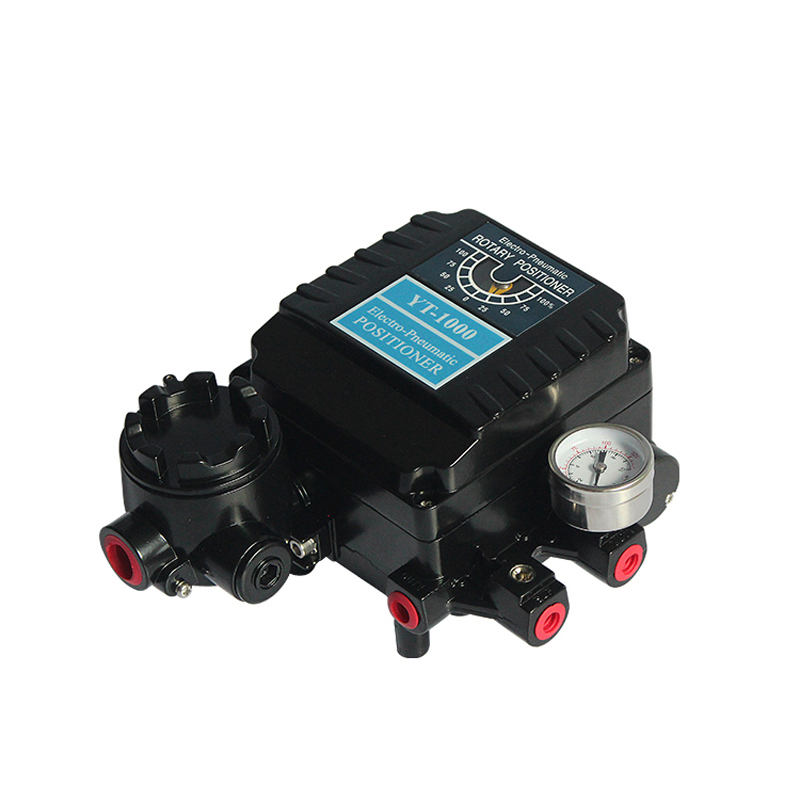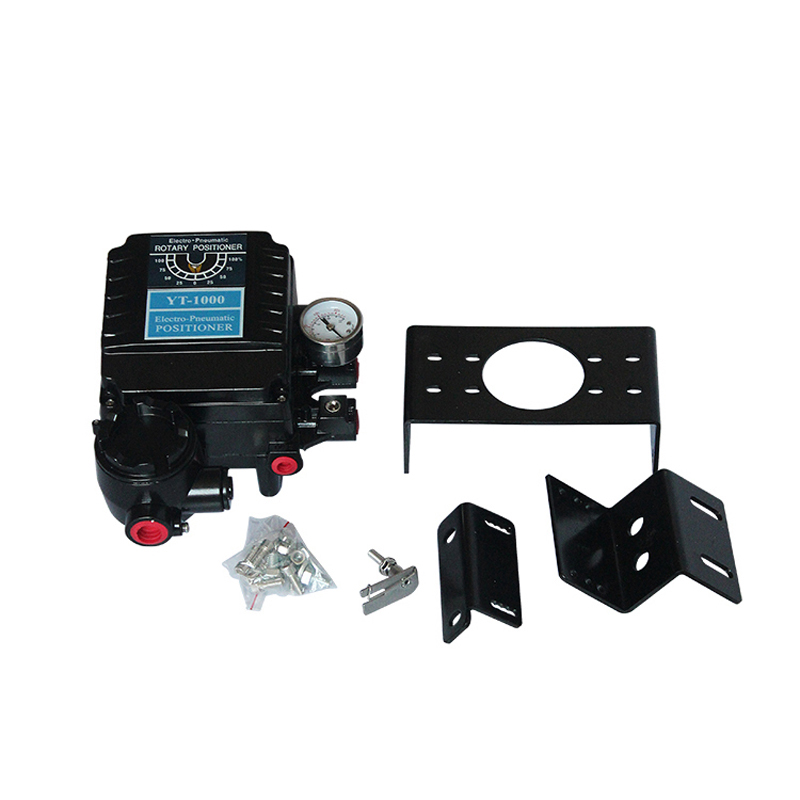W ewoluującym świecie automatyzacji przemysłowej,Pozycjonujący zaworów kontrolnychsą niezbędne do zwiększenia dokładności i wydajności operacji zaworów. Urządzenia te pomagają regulować ruch zaworów w oparciu o sygnały kontroli procesu, zapewniając optymalne prędkości przepływu, ciśnienie i temperaturę dla wielu branż, w tym ropę i gaz, farmaceutyki, przetwarzanie chemiczne i wiele innych. Wchodząc do 2024 r. Zrozumienie kosztów związanych z pozycjonistami zaworów kontrolnych może mieć kluczowe znaczenie dla podejmowania świadomych decyzji zakupowych. W tym przypadku nurkujemy w czynnikach, które wpływają na koszty, rodzaje pozycji i opłacalne strategie wybierania i utrzymywania tych podstawowych elementów.
1. Co to jestPozycjonator zaworu sterującego?
Pozycjoner zaworu sterującego to akcesorium zamontowane na zaworze sterującym w celu regulacji pozycji otwierania lub zamknięcia zaworu na podstawie otrzymanego sygnału sterującego. Zwiększa to precyzję procesu poprzez kompensowanie zmian ciśnienia, przepływu lub innych zmiennych operacyjnych. Pozycjonujący występują w kilku odmianach, w tym w modelach pneumatycznych, elektro-pneumatycznych i cyfrowych, z których każdy wpływa zarówno na wydajność, jak i koszt.
2. Kluczowe czynniki kosztówPozycjonujący zaworów kontrolnych
Kilka czynników wpływa na koszt pozycji zaworu kontrolnego. Oto podział głównych elementów prowadzenia kosztów:
- Rodzaj pozycji: Ogólnie rzecz biorąc, cyfrowe pozycje są droższe niż pneumatyczne lub elektro-pneumatyczne ze względu na ich zaawansowane cechy, takie jak zdalna kalibracja, diagnostyka i większa kompatybilność z zautomatyzowanymi systemami.
- Marka i producent: Znane marki, takie jak Emerson, ABB, Siemens i Honeywell, często mają cenę premium, ale oferują niezawodność, wsparcie i przedłużone gwarancje. Jednak w przypadku firm, które chcą zoptymalizować budżety, niektóre mniej znane marki mogą oferować tańsze alternatywy o porównywalnej wydajności.
- Materiał i konstrukcja: Pozycjonery stosowane w trudnych środowiskach, takich jak rośliny chemiczne lub miejsca wiertnicze na morzu, mogą wymagać materiałów odpornych na korozję (stali nierdzewnej, stopów egzotycznych), które zwiększają cenę. Zastosowania o wysokiej temperaturze lub pod wysokim ciśnieniem mogą również wymagać wyspecjalizowanych komponentów, wpływających na koszty.
- Kompatybilność systemu sterowania: Jeśli pozycjoner musi zostać zintegrowany z systemem DCS (system kontroli rozproszonego) lub systemem SCADA, koszt może wzrosnąć z powodu dodatkowych funkcji kompatybilności i programowania.
- Konserwacja i naprawa: Koszt własności obejmuje nie tylko początkową cenę zakupu, ale także bieżącą konserwację, kalibrację i potencjalne koszty naprawy. Niektórzy pozynicy cyfrowi oferują predykcyjne powiadomienia dotyczące konserwacji, które mogą pomóc w obniżeniu kosztów długoterminowych.
- Złożoność instalacji: Pozycjonujący, którzy wymagają specjalistycznej wiedzy lub dodatkowej infrastruktury (takiej jak okablowanie modeli cyfrowych lub elektro-pneumatycznych) mogą podnieść koszty instalacji. Pneumatyczne pozycje są często prostsze w instalacji, ale mogą brakować zaawansowanych funkcji ich cyfrowych odpowiedników.

3. Średnie zakresy kosztów w 2024 r.
W 2024 r. Ceny pozycjonistów zaworów kontrolnych mogą się znacznie różnić w zależności od czynników przedstawionych powyżej:
- Pneumatyczne pozycje: Są to często najbardziej opłacalna opcja, a ceny zwykle od 500 do 2000 USD w zależności od marki i funkcji.
- Elektro-pneumatyczne pozycje: Przy dodatkowej funkcjonalności, takiej jak ulepszona dokładność kontroli, pozycjonariusze elektro-pneumatyczni zwykle wahają się od 1000 do 3500 USD.
- Digital Pozyciści: Najbardziej wyrafinowani i kosztowni pozycjacy cyfrowi zwykle kosztują od 2500 do 6000 USD. Wysokiej klasy modele z obszernymi możliwościami diagnostycznymi i komunikacyjnymi mogą przekroczyć ten zakres.
4. Rodzaje pozycji zaworów kontrolnych i ich wpływ na koszty
- Pneumatyczne pozycje: Idealny do podstawowych aplikacji działają wyłącznie na sprężonym powietrzu. Są solidne i niezawodne w obszarach, w których energia elektryczna może nie być wykonalna. Brakuje im jednak niektórych zaawansowanych możliwości kontroli i diagnostycznych występujących w modelach cyfrowych, które mogą ograniczyć ich zastosowanie w złożonych systemach.
- Elektro-pneumatyczne pozycje: Te pozycje łączą sygnały elektryczne z kontrolą pneumatyczną, dzięki czemu są odpowiednie do zastosowań wymagających lepszej dokładności i szybszych czasów reakcji. Są one na ogół wycenione wyższe niż modele pneumatyczne ze względu na ich dodatkowe cechy.
- Digital Pozyciści: Są one wyposażone w mikroprocesory, które umożliwiają precyzyjną kontrolę, diagnostykę i integrację z zaawansowanymi systemami automatyzacji. Chociaż pozycjonujący cyfrowi są często najdroższe, oferują długoterminowe oszczędności w zakresie konserwacji i wydajności.

5. Ukryte koszty i względy budżetowe
Oprócz początkowej ceny zakupu klienci powinni uwzględnić inne wydatki związane z pozycjonistami zaworów sterujących:
- Koszty utrzymania: Digital Pozycjonariusze mogą wymagać okresowych aktualizacji oprogramowania lub kalibracji, zwiększając długoterminowe wydatki na konserwację.
- Instalacja i konfiguracja: W niektórych przypadkach instalacja obejmuje złożoną konfigurację, szczególnie jeśli pozycjoner musi zostać zintegrowany z istniejącymi systemami kontroli roślin.
- Zużycie energii: Electro-pneumatyczne i cyfrowe pozycje wymagają źródeł energii, co może prowadzić do wyższych kosztów operacyjnych, szczególnie w środowiskach energochłonnych.
6. Jak wybrać prawoPozycjonator zaworu sterującegodla twojego budżetu
Podczas wybierania pozycji zaworu sterującego konieczne jest dopasowanie wyboru do określonych wymagań aplikacji. Oto kilka wskazówek zorientowanych na klienta:
- Oceń potrzeby operacyjne: Podstawowe aplikacje mogą wymagać tylko pozycji pneumatycznej, podczas gdy bardziej skomplikowane systemy mogą skorzystać z możliwości pozycjonowania cyfrowego.
- Rozważ całkowity koszt własności: Pomyśl o początkowym zakupie. Digital Pozycjonistów z diagnostyką mogą skrócić przestoje i przedłużyć interwały konserwacji, potencjalnie oszczędzając koszty w czasie.
- Reputacja marki i dostawcy: Poszukaj dostawców z pozytywnymi recenzjami klientów, silnymi gwarancjami i responsywną obsługą klienta. Może to zminimalizować problemy z wadliwymi częściami lub opóźnieniami usług.
- Wybierz skalowalne modele: Wielu pozycji cyfrowych oferuje modułowe opcje, umożliwiając firmom dodanie funkcjonalności później. Może to być opłacalna strategia dla tych, którzy mogą rozszerzyć wymagania systemu sterowania w przyszłości.
7. Przyszłe trendy wPozycjonator zaworu sterującegoKoszty
Patrząc w przyszłość, niektóre trendy branżowe mogą wpływać na koszty pozycjonującego zaworu kontrolnego:
- Postęp w inteligentnej technologii: W miarę wzrostu większej liczby obiektów w kierunku IoT i inteligentnego produkcji popyt na pozycjonerów cyfrowych z zaawansowanymi danymi i możliwościami komunikacyjnymi rośnie. Zapotrzebowanie to może zwiększyć innowacje, jak i koszty w nadchodzących latach.
- Globalne wahania łańcucha dostaw: Koszt surowców i globalnej logistyki będą nadal wpływać na ceny. Firmy mogą potrzebować zaplanować potencjalny wzrost ceny lub czasów realizacji, szczególnie w przypadku materiałów wysokiej jakości lub wyspecjalizowanych.
- Inicjatywy zrównoważonego rozwoju: Wielu producentów przyjmuje ekologiczne praktyki, które mogą wpływać na koszty. Niektórzy cyfrowi pozycje są teraz wyposażone w tryby oszczędzające energię i komponenty recyklingowe, dostosowując się do zrównoważonych praktyk przemysłowych.
8. Wniosek: Podjęcie świadomej decyzji w 2024 r.
Inwestowanie w odpowiednią pozycję zaworu sterującego ma kluczowe znaczenie dla wydajności operacyjnej i oszczędności kosztów. Rozumiejąc różne typy, czynniki kosztów i długoterminową wartość różnych pozycji, możesz dokonać świadomego wyboru, który jest zgodny z Twoimi potrzebami budżetowymi i aplikacyjnymi.
Pamiętaj, że chociaż może być kuszące wybór opcji najniższych kosztów, rozważ całkowity koszt własności i rolę pozycjonatora w systemie sterowania. Niezawodny, wysokiej jakości pozycja może zmniejszyć konserwację, poprawić wydajność i ostatecznie zapewnić lepszy zwrot z inwestycji. W miarę postępu branży informowanie o trendach rynkowych i rozwoju technologii zapewni, że wybierzesz najlepszą pozycję do swoich potrzeb.
Niniejszy przewodnik ma na celu oferowanie kompleksowego widoku kosztów pozycjonowania zaworu sterującego w 2024 r. Zapraszam do dostosowania go ze szczegółami dla odbiorców lub kontekstu branżowego.
Czas postu: listopada 07-2024





